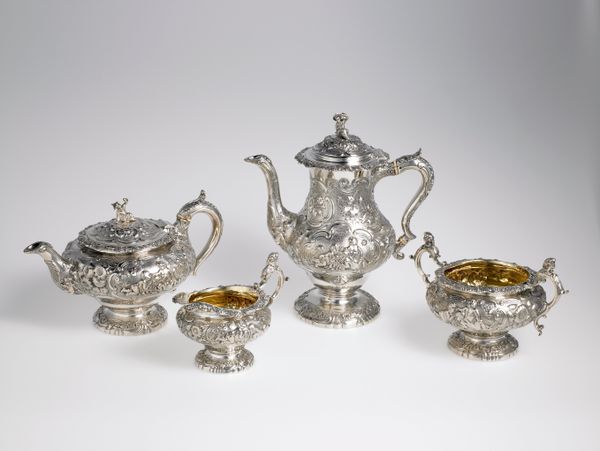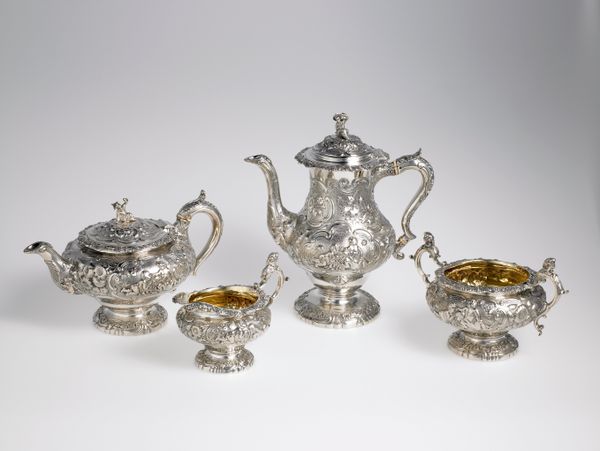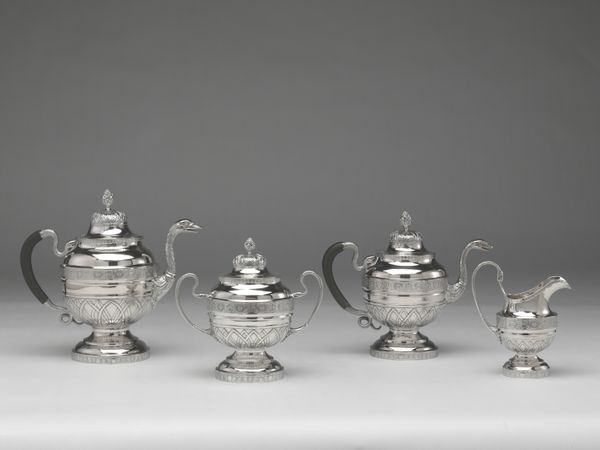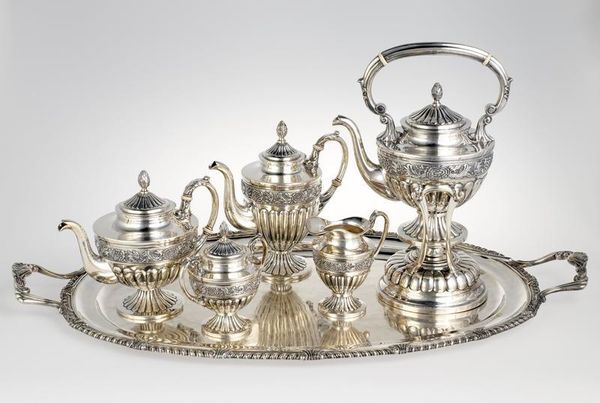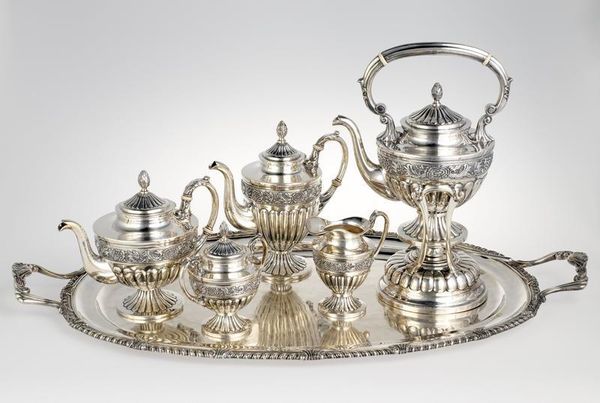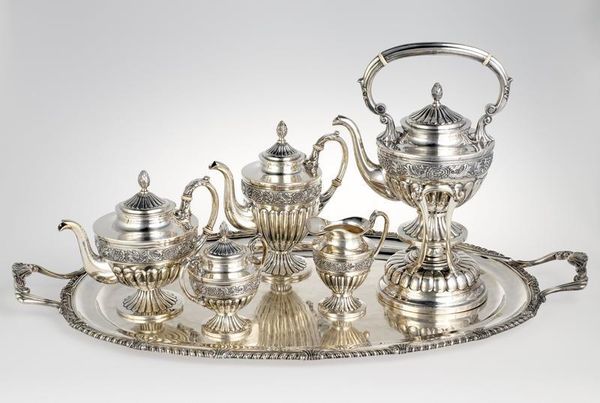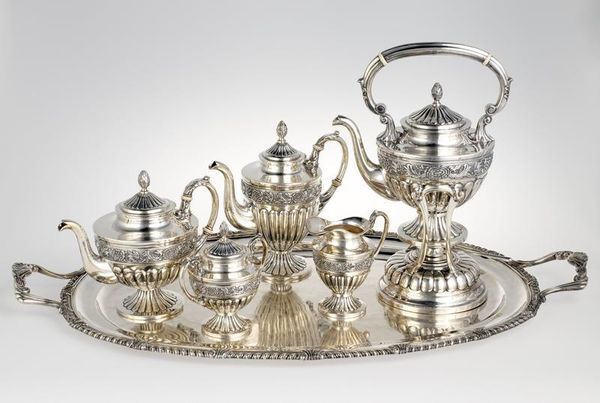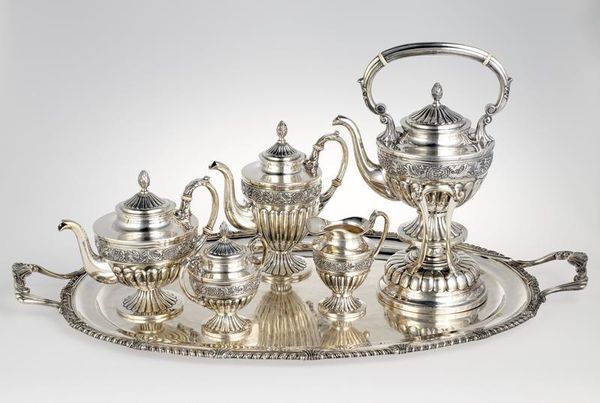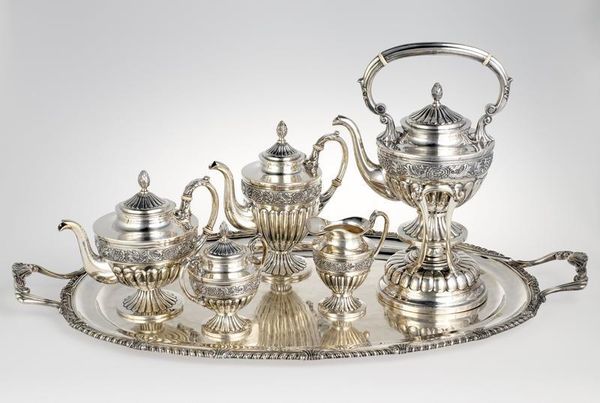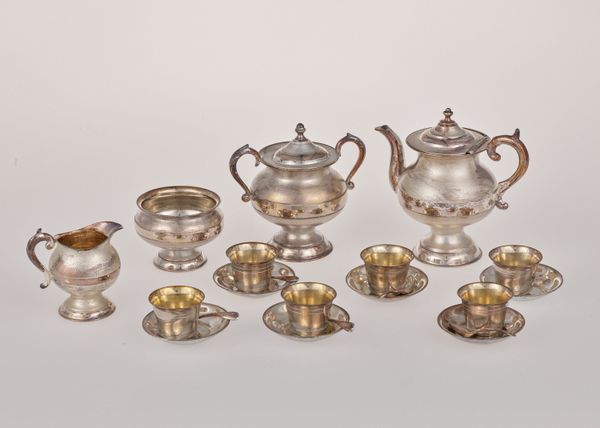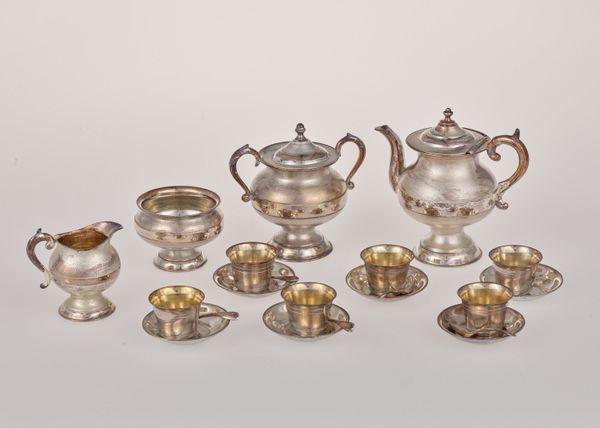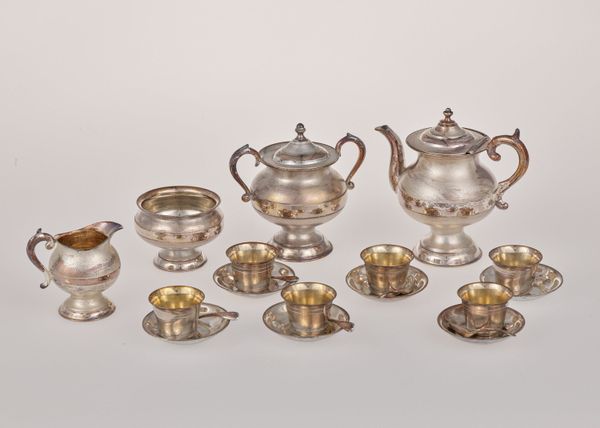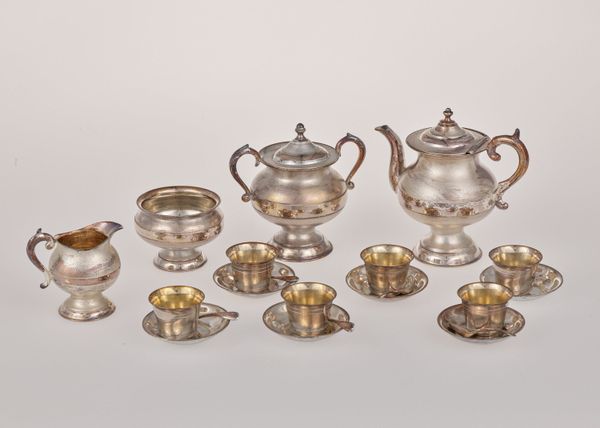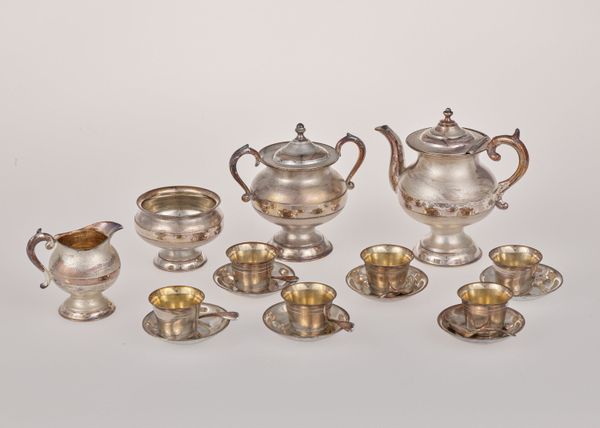
Dimensions: 6 1/2 x 8 1/2 x 5 3/4in. (16.5 x 21.6 x 14.6cm)
Copyright: Public Domain
Editor: Here we have an English silver sugar bowl, attributed to Joseph Angell, dating back to 1823. Its intricate detail and ornate form evoke a sense of old-world luxury. What visual stories can you unpack for us? Curator: The first thing I notice is how this object speaks of ritual and performance. It isn't merely functional; it's deeply symbolic. Sugar, then as now, carries connotations of wealth and even empire – think of the sugar trade and its links to colonial power. The baroque style amplifies this; all the elaborate ornamentation acts as a status signifier. It reflects societal aspirations towards prosperity and taste. Editor: So, you're saying the sugar bowl goes beyond just holding sugar; it's making a statement. Do you see that statement changing over time? Curator: Precisely. And yes, consider the weight of silverware in our cultural memory: heirloom status, family lineage, display of refinement, reflecting and solidifying aspirations and perceived social rank. The engraved scenes -- though pastoral at first glance -- might carry particular political or personal meanings understood at that time. Silver, with its reflective surface, implies wealth and reflects those meanings across generations, accruing layers of history and personal narrative with each passing decade. Editor: It's fascinating how a single object can hold so much history. I never thought about sugar having an imperial context, nor about an object’s role in perpetuating the status quo. Curator: Indeed! The artistry of this sugar bowl serves as both a mirror reflecting societal values and a time capsule preserving cultural memory. Seeing the familiar, but recognizing its deeper context gives us a glimpse into another era’s cultural anxieties and self-regard.
Comments
No comments
Be the first to comment and join the conversation on the ultimate creative platform.
